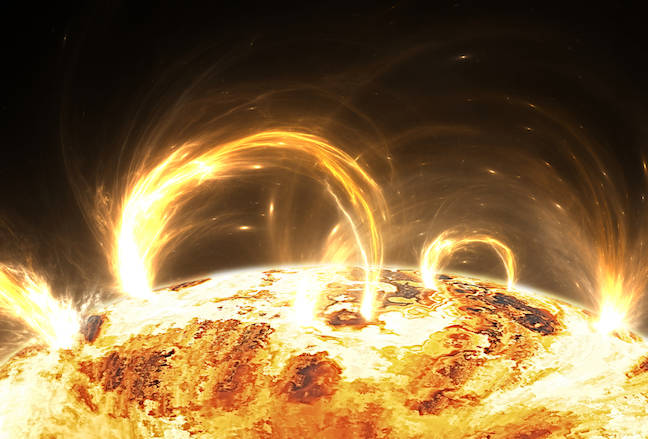
"It's well known that CMEs see the Sun belch out charged plasma that, when it comes into Earth's immediate neighbourhood, can create solar storms that disturb magnetic fields and disrupt radio communications. Solar storms also heat Earth's upper atmosphere, expanding it just enough that low-Earth-orbit satellites like Starlink's fleet of broadband birds feel a little more atmospheric drag and can lose some altitude."
"When that happens, the paper suggests "Starlink responds by temporarily raising the affected satellites above their nominal altitude." SpaceX's broadband biz typically lets those sats return to their original altitude within a day or two. But according to the paper: "This corrective action triggers a cascading effect, with orbital adjustments propagating across neighboring satellites in both spatial and temporal dimensions. Full stabilization of the orbit often takes 3-4 days. These dynamic adjustments can disrupt satellite links and routing paths, contributing to performance issues such as a sustained increase in round-trip time.""
""This finding raises fundamental questions about the suitability of today's autonomous constellation management during extreme space weather events," the paper adds. "The self-driving algorithms, optimized for normal operations, may inadvertently amplify storm impacts by triggering chains of orbital adjustments.""
Coronal mass ejections between May and October 2024 produced solar storms that increased upper-atmosphere heating and atmospheric drag on low-Earth-orbit satellites. Increased drag caused some Starlink satellites to lose altitude, prompting temporary orbital raises to restore nominal altitudes. These corrective maneuvers propagate across neighboring satellites, with full orbital stabilization often taking three to four days, and can disrupt links and routing, producing sustained round-trip time increases. The impacts persist for a day or more after geomagnetic conditions ease. Satellites at high latitudes or with greater exposure face greater vulnerability. Autonomous constellation algorithms optimized for normal operations can amplify storm impacts.
Read at Theregister
Unable to calculate read time
Collection
[
|
...
]